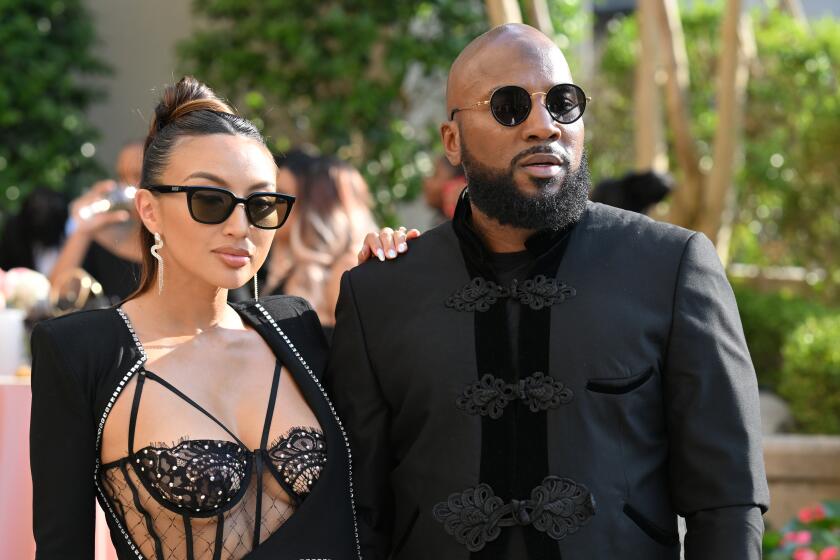Buddy Collette’s Los Angeles
Buddy Collette, the legendary jazz musician who died in Los Angeles on Sunday, at 89, both profited from and contributed to the rich midcentury jazz scene along Los Angeles’ Central Avenue. Playing the saxophone before he entered his teens, Collette started his first band at 12, later performing with the Chico Hamilton Quintet as well as for Lili St. Cyr, Frank Sinatra and Ella Fitzgerald. The versatile wind player founded a groundbreaking interracial symphony and was instrumental in promoting the amalgamation of then-segregated Musicians Local 47 and Local 767, the African American musicians’ union.
Much has been written over the years about Collette’s extensive contributions to jazz and Los Angeles’ musical life. But when Los Angeles-born Collette and writer Barbara Isenberg spoke at his mid-Wilshire home in July 1999, they wound up talking as much about what Los Angeles had done for him. Here are some of Collette’s own words about his Los Angeles.
The melting pot
I grew up in Watts. There was plenty of land at a reasonable price, and many people went out and bought land. People kind of helped each other build their homes, and my father built our house with a bunch of friends.
The greatest thing was the different kinds of people — Mexican, Chinese, Japanese, black, Italian, what have you. We all went to the same school, and everybody got along quite well. It wasn’t like you hear about now, where somebody gets beat up because of his race. We didn’t know what that was about. It was a great way to grow up because your favorite friend could be just anybody that you chose. Everybody was accepting, and everybody was respected.
I went to Jordan High School. Joseph Lippi, who was a music teacher there, was really enthusiastic about being a musician and playing everything right. He influenced a lot of us. There were pianos probably in every home. Walking down the street, you’d hear saxophones and trumpets. Maybe a saxophone player would stand on one corner, and then if I heard him, I’d get my horn and stand out in front of the house, like talking on the horn. There wasn’t much traffic, and sound travels.
My mother and dad loved music. There was a lot of jazz on the radio, and the big bands were very popular too. Count Basie or Duke Ellington would come to town, maybe play the Elks Hall. I forget what club it was, but my sister and I went along with our parents to hear Louis Armstrong. I was taken with how they seemed to enjoy themselves so much and how people were reacting to them.
About the time I got my band started, I met up with Charles Mingus. We had never had a string bass in any of our orchestras then. Charles actually was playing cello with a trio I think he had with his sisters, and when I met him I said, “Well, if you had a bass, I could hire you in my band.” That excited him, and he said maybe his father could trade the cello in for a bass. He did, and I hired him for the band.
My earliest memory of Central Avenue would be when I was about 15 or 16 years old. Charles and I used to go there and hang out and try to meet people who were in the business, and a lot of them would go to the after-hours spots. There was a place called the 54th Street Drugstore, and if a big group was in town, the musicians would come in and hang out. Celebrities like Jack Johnson, the fighter, and bands like Cee Pee Johnson’s were the local hotshots. Cee Pee Johnson’s was the first professional band I joined that paid money.
People would dress up and walk Central Avenue from spot to spot, showing off. If you had a new car, you’d bring it over and park it on the avenue. Everyone was out there. You’d go on over to see what was going on. It was like your newspaper.
A unity plea
We started a symphony orchestra in the late ‘40s. Mingus and I met guys who played in the symphony, and they’d heard about the amalgamation of the white and black unions that we were trying to get together. I thought it was a good idea for us to have that symphony training, so I got people together, mostly minorities, to play Brahms and other literature.
Once we invited Josephine Baker, and she came by between shows. The word got out that she was going to be there, and the place was packed. She got up and spoke. She said she saw no reason why there were two musicians’ unions and asked why we couldn’t all get together like we were that day. Before she finished, she looked down at a couple of little girls in the audience, a white girl and a black girl, and had them come up onstage. She whispered in their ears, and they began to hug each other. She said, “I think you can learn a lot from these youngsters.”
Collette’s remarks are excerpted from Barbara Isenberg’s book “State of the Arts: California Artists Talk About Their Work” (Ivan R. Dee).
More to Read
The biggest entertainment stories
Get our big stories about Hollywood, film, television, music, arts, culture and more right in your inbox as soon as they publish.
You may occasionally receive promotional content from the Los Angeles Times.






